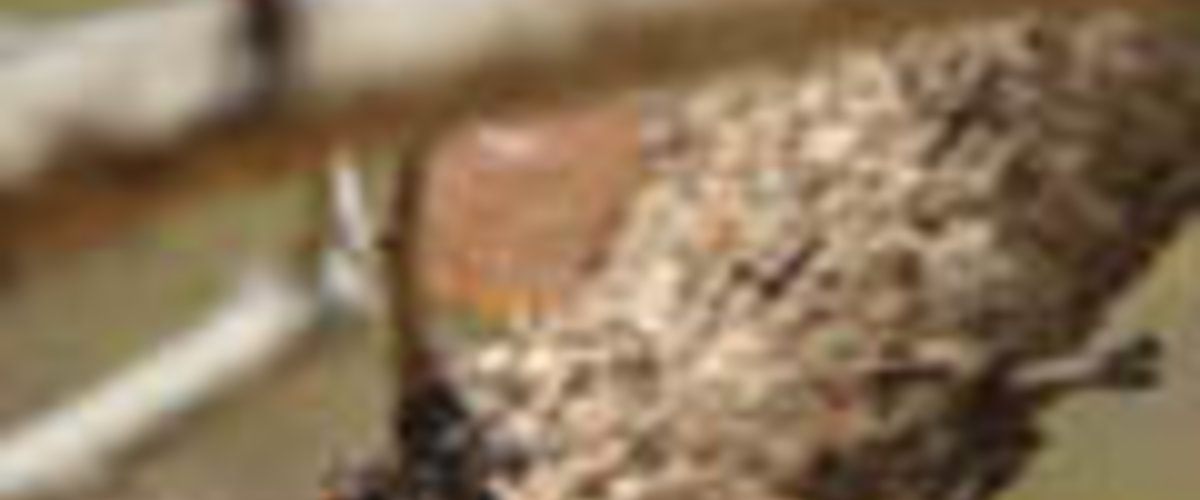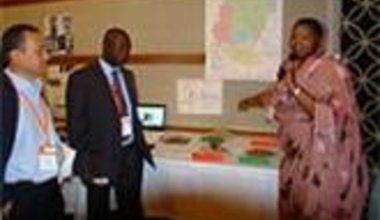A primary export with uses ranging from mummification to fizzy drink production, gum arabic in Sudan has experienced a turbulent ride on world markets amid controversial pricing at home.
Producing the two varieties of hashab (acacia senegal) and talha (acacia seyal), Sudan accounts for about 70 per cent of the world's gum arabic production, which makes the commodity the country's fourth most important agricultural export after sesame, livestock and cotton.
A plant that endures harsh environments, gum arabic grows in the Sub-Saharan "gum belt", ranging from Mauritania and Senegal in west Africa through Sudan to Ethiopia and Somalia in the east.
Given the name when Arab traders introduced it to medieval Europe, gum arabic had been used by ancient Egyptians, who used it as a glue in body mummification as well as water colours and dye.
"Looking at the range of products which contain gum arabic (GA), even if in trace amounts, it is not unreasonable to contemplate that most people worldwide use GA every day ... without being aware of it," Hassan Abdel Nour, forestry professor at the Sudan University for Science and Technology writes in an analysis.
Oil and water do not mix under normal circumstances, but they do with the addition of gum arabic, said Ezzedin Bashir, quality control manager at the Khartoum cleaning factory of Afritec, one of the product's largest manufacturing and trading companies.
Due to its high fibre content, emulsifying and bulking properties, gum arabic -- which resembles hard candy once dried and cleaned -- is used in medicines, carbonless paper and a wide range of food stuffs and beverages, including Coca Cola, Mr. Bashir explained.
From 1982 to 2002, Sudan's gum arabic export earnings averaged $40 million annually, according to a recent World Bank project proposal aimed at improving gum arabic production and marketing.
Up until the early 1990s, the country covered about 60-70 per cent of the commodity's world export. At that time, however, international economic sanctions against Sudan resulted in export losses.
While the United States had excluded GA from sanctions, the commodity continued to suffer on global markets until African and European countries began buying it from Sudan around 1996, when the government opened up the export market for
processed GA.
After 12 processing companies appeared in 2003 and began manipulating prices, Sudan's share in global gum arabic export remained at about 35 per cent, while foreign demand also sharply decreased due to the introduction of starchy substitutes, said World Bank Rural Development Specialist Mohamed Osman.
People worst affected by price battles are producers at the bottom of the trading chain, especially in October, when tapping season begins.
Tapping is the process of slitting the tree's bark, allowing it to seep. When the sap solidifies after some 20 days, gum arabic can be collected then cleaned.
"One of the problems is that all through the gum arabic belt, people need water when they do tapping," said Musa Suleiman, Blue Nile State National Forestry Corporation (NFC) Director from his Damazin office.
As forests are located in remote areas, tapping requires workers to stay in the field for several weeks, meaning water and food must be transported there, Mr. Suleiman explained, increasing farmers' costs.
To finance their supplies, producers are then forced to sell their yield at a rather low price to agents offering advance payment.
According to Mr. Suleiman, producers receive 42 to 50 Sudanese pounds for one quantar (about 45.5 kilograms), while agents sell the same load on to big companies for twice as much, about 110 pounds.
Low income may also result in producers cutting down their forests and converting to sesame or durra (millet) farming, the director added.
"We try to convince them not to cut the forests and help them to register their land with the NFC," Mr. Suleiman said. The forestry body also urged producers to unite in cooperatives – which 70 per cent of Blue Nile producers have done – to ease communication, technical support and capacity building.
As part of its project to enhance GA production and marketing, which kicked off in five Sudanese states in early May, the World Bank was also offering micro-credit to producers through a local bank.
As a logical consequence of low market price, production might decrease, World Bank Monitoring and Evaluation Officer Ibrahim Abdallah said. The goal would be to provide incentive for producers to sell gum arabic to end users, rather than compromise for a fraction of the price through selling to middlemen.
 UN
UN United Nations Peacekeeping
United Nations Peacekeeping





